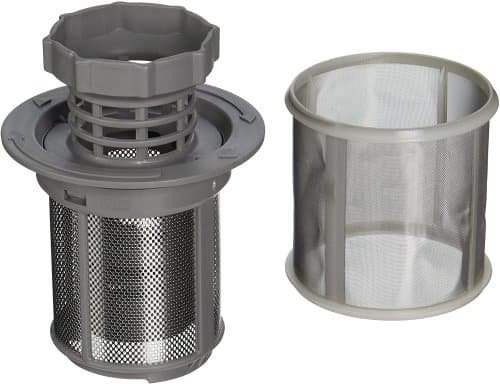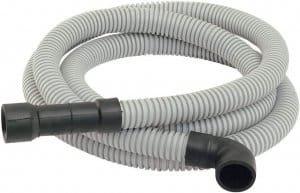Are you tired of dealing with a smelly dishwasher? Is water not draining properly from your dishwasher? It’s likely that your dishwasher drain needs cleaning. Over time, food particles, grease, and soap scum can build up in the drain, leading to unpleasant odors and poor drainage. In this article, we will guide you through the process of cleaning your dishwasher drain effectively. By following these simple steps, you can ensure that your dishwasher remains fresh and functional.
A clogged dishwasher drain can lead to poor performance and unpleasant odors. Regularly cleaning the dishwasher drain can help maintain its efficiency and extend its lifespan. In the following sections, we will walk you through the process of cleaning your dishwasher drain effectively.
Table of Contents
Signs of a Clogged Dishwasher Drain
Before diving into the cleaning process, it’s essential to identify whether your dishwasher drain is clogged. Look out for the following signs:
- Water not draining properly from the dishwasher.
- Foul odors coming from the dishwasher.
- Dirty dishes after a cleaning cycle.
- Excessive noise during operation.
If you notice any of these signs, it’s time to clean your dishwasher drain.
Safety Precautions
Before starting the cleaning process, ensure your safety by following these precautions:
- Disconnect the dishwasher from the power supply.
- Put on a pair of gloves to protect your hands.
- Use caution when handling any sharp objects.
Gather the Necessary Tools
To clean your dishwasher drain, you will need the following tools:

- Screwdriver
- Needle-nose pliers
- Soft brush or toothbrush
- Vinegar
- Baking soda
- Clean cloth
Step 1: Remove the Bottom Rack
Start by removing the bottom rack from your dishwasher. This will provide you with better access to the drain area.
Step 2: Locate the Drain
Next, locate the dishwasher drain. It is usually found at the back of the dishwasher, near the bottom. It may be covered by a filter or grate.
Step 3: Inspect and Remove Debris
Inspect the drain area for any visible debris such as food particles or paper scraps. Use a soft brush or toothbrush to gently remove the debris. Be careful not to push the debris further into the drain.
Step 4: Clean the Filter
If your dishwasher has a filter, remove it and rinse it under running water. Use a soft brush or toothbrush to remove any stubborn debris. Clean the filter thoroughly to ensure proper drainage.

Step 5: Clear the Drain Hose
Using a screwdriver, detach the drain hose from the dishwasher. Check for any clogs or blockages in the hose. If you find any, use a long, flexible brush or a straightened wire hanger to gently remove the debris.

Step 6: Clean the Spray Arms
The spray arms in your dishwasher can also accumulate debris over time. Remove the spray arms and rinse them under running water. Use a toothpick or similar tool to clear any clogs in the spray arm nozzles.

Step 7: Reassemble and Test
Once you have cleaned all the components, reassemble the dishwasher. Make sure all connections are secure. Reinsert the bottom rack and close the dishwasher door. Reconnect the power supply and run a test cycle to ensure proper drainage.
Tips to Prevent Future Clogs
To prevent future clogs in your dishwasher drain, follow these tips:
- Scrape off excess food from plates before loading them into the dishwasher.
- Run the garbage disposal before starting the dishwasher to prevent food particles from entering the drain.
- Regularly clean the filter and spray arms.
- Use a dishwasher cleaner once a month to remove built-up residue.
Can I use bleach to clean my dishwasher drain?
It is not recommended to use bleach as it can damage the rubber components of your dishwasher. Stick to natural cleaning agents like vinegar and baking soda.
How often should I clean my dishwasher drain?

It is recommended to clean your dishwasher drain once every three to six months, depending on your usage and the hardness of your water.
Why is my dishwasher still not draining properly after cleaning the drain?
If your dishwasher is still not draining properly after cleaning the drain, there may be a more significant issue. It is advisable to contact a professional technician to diagnose and repair the problem.
Can I use a dishwasher cleaner instead of vinegar and baking soda?

Yes, you can use a dishwasher cleaner according to the manufacturer’s instructions. However, vinegar and baking soda are cost-effective and readily available alternatives.
Is it necessary to remove the spray arms for cleaning?

Removing the spray arms allows for thorough cleaning and ensures that there are no clogs in the nozzles. It is recommended to remove them during the cleaning process.
How to clean dishwasher drain hose without removing it?
Cleaning a dishwasher drain hose without removing it can be a bit tricky, but it is possible. One method you can try is using a long, flexible brush or pipe cleaner to reach into the hose and remove any debris or clogs.
Gently insert the brush into the drain hose and move it back and forth to dislodge any buildup. Another option is to use a vinegar solution to clean the hose.
Mix equal parts of vinegar and water, then pour it into the dishwasher and run a cycle without any dishes. This can help dissolve any residue in the drain hose.
If these methods don’t work or you’re unsure about cleaning the drain hose yourself, it’s best to consult your dishwasher’s user manual or contact a professional for assistance.
They will have the necessary tools and expertise to safely remove and clean the drain hose if needed. Regular maintenance of your dishwasher, such as cleaning filters and running cleaning cycles, can also help prevent clogs in the drain hose in the future.
How to clean dishwasher drain hose?
Cleaning the dishwasher drain hose is a relatively simple process that can help improve the efficiency and lifespan of your dishwasher. First, you’ll want to disconnect the dishwasher from its power source to ensure safety. Next, locate the drain hose, which is typically located at the back of the dishwasher and connected to the sink drain or garbage disposal.
Once you’ve located the drain hose, remove it from its connection point and inspect it for any clogs or debris. If you notice any blockages, use a pipe cleaner or a long brush to gently dislodge and remove them. You can also run water through the hose to flush out any remaining debris.
Once you’ve cleaned the drain hose thoroughly, reattach it to its connection point and secure it tightly. Finally, plug in your dishwasher and run a test cycle to ensure that everything is working properly.
Regularly cleaning your dishwasher’s drain hose will not only prevent clogs but also help maintain optimal performance. By following these simple steps, you can keep your dishwasher running smoothly and avoid any potential issues in the future.
How to clean dishwasher drain with baking soda and vinegar?
To clean your dishwasher drain using baking soda and vinegar, you can follow these simple steps. First, remove any visible debris or food particles from the drain area. Then, pour about half a cup of baking soda down the drain. After that, pour an equal amount of vinegar down the drain and let it sit for about 15 minutes to allow the mixture to work its magic.
Next, boil some water and carefully pour it down the drain to flush out any remaining residue. This hot water will help dissolve any grease or grime that may be clogging the drain. Finally, run a short cycle on your dishwasher without any dishes in it to ensure that all traces of baking soda and vinegar are rinsed away. This method is an effective and natural way to clean your dishwasher drain without using harsh chemicals.
Remember to always consult your dishwasher’s manual before attempting any cleaning methods to ensure you don’t damage any components or void your warranty.
How to clean dishwasher drain trap?
Cleaning the dishwasher drain trap is an essential maintenance task to ensure your dishwasher functions efficiently. To clean the drain trap, start by turning off the dishwasher and unplugging it from the power source for safety. Remove the bottom rack of the dishwasher to gain access to the drain trap area.
Next, locate the drain trap, which is usually located at the bottom of the dishwasher near the back. It may be covered by a removable panel or filter. Carefully remove this cover or filter and inspect it for any debris or buildup. Use a soft brush or toothbrush to gently scrub away any residue on the cover or filter.
Once you have cleaned the cover or filter, use a paper towel or cloth to wipe away any remaining debris from inside the drain trap area. If there is stubborn residue that cannot be easily removed, you can use a mixture of vinegar and baking soda to create a natural cleaning solution. Pour this solution into the drain trap area and let it sit for a few minutes before scrubbing away with a brush.
After thoroughly cleaning and rinsing off all components, reassemble everything in reverse order and plug in your dishwasher. Run a short cycle with no dishes to ensure everything is functioning properly and that there are no leaks.
Regularly cleaning your dishwasher drain trap will help prevent clogs and maintain optimal performance of your appliance.
Conclusion
Cleaning your dishwasher drain is a simple yet crucial task to maintain the performance and cleanliness of your dishwasher. By following the step-by-step guide provided in this article, you can easily remove debris and prevent clogs. Remember to perform regular maintenance to keep your dishwasher running smoothly and odor-free.


2 thoughts on “How to Clean Your Dishwasher Drain: A Step-by-Step Guide”
Comments are closed.